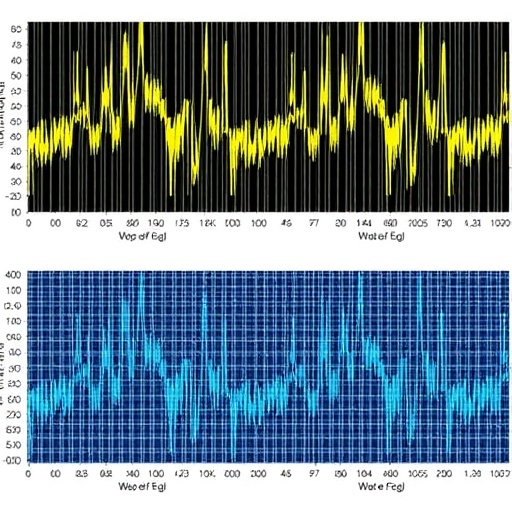An evolutionarily advantageous process goes awry
Type-2 (adult-onset) diabetes and other diseases related to the obesity epidemic depend on how the body stores excess energy, according to evolutionary biologist Mary Jane West-Eberhard, emeritus scientist at the Smithsonian Tropical Research Institute. In the Proceedings of the National Academy of Sciences, she describes her theory about fat inside the abdominal cavity–visceral adipose tissue or VAT–the “VAT prioritization hypothesis.”
More than 300 million people are affected by obesity-associated diabetes. Heart disease is a major killer. Both involve chronic inflammation.
“Pathogenic obesity is an advantageous process gone awry,” said West-Eberhard. “Very early in life the body makes decisions about where to store fat. It makes sense for poorly nourished fetuses to invest in VAT rather than in fat under the skin because VAT evolved to protect us from infections, but this choice sets us up for disaster if we have access to too many calories later in life.”
Researchers study obesity from different perspectives, but West-Eberhard took a broader look to ask how the body makes decisions about where to deposit fat and why.
“Trying to understand diseases related to obesity without understanding the abdominal structures that become obese is like trying to understand circulatory diseases without knowing the functions of the heart,” West-Eberhard said.
Visceral fat is nature’s super band-aid. Sometimes called “the abdominal policeman,” a VAT-rich structure called the omentum, a loosely hanging fold of the membrane lining the abdominal cavity, sticks to wounds, foreign objects such as shrapnel and infection sites like a bandage full of antibiotics. In fact, surgeons sometimes use pieces of omentum to control severe postoperative infections. VAT surrounds the small intestine, defending the body from ingested pathogens and toxins.
“The fact that visceral fat tissue evolved to fight visceral infections provides a causal hypothesis for how high fructose sweeteners and saturated fats contribute to chronic diseases such as type 2 diabetes,” West-Eberhard said. “They influence which bacteria grow inside the intestines [called the microbiome], making the intestinal walls more permeable and releasing more toxins into the bloodstream, stimulating the visceral immune system and potentially leading to chronic inflammatory disease.”
In the past, the role of visceral fat as part of the immune system may have been more widely important than it is today because starvation and infections were more common. West-Eberhard proposes that in fetuses subject to nutritional stress, more energy may be stored as fat around the abdominal organs rather than as fat under the skin (subcutaneous fat or SAT). She notes that childhood catch-up growth, a better predictor of obesity-associated disease than low birth weight, may be a sign of the mistake the body has made as it assigns energy to VAT producing the apple shape of abdominal obesity, rather than the pear shape of lower body fat distributed in the hips, buttocks or thighs or more evenly under the skin.
In overweight individuals, a dangerous feedback loop may develop: increased VAT leads to increased chronic inflammation, which, in turn, leads to increased insulin resistance leading to further VAT storage and increased susceptibility to disease. Eventually, the ability to produce insulin is reduced and these individuals may need injected insulin to control type-2 (adult onset) diabetes.
“I think the combination of malnutrition early in life coupled with modern diets of saturated and trans-fats and high-fructose foods available on a global scale is leading to a situation that is toxic for individuals in many different cultures.” West-Eberhard said. “People’s body shape–apple versus pear–is based on the way their bodies allocate fat. Even in ancient societies, poor nutrition leading to investment in VAT contributed to apple-shaped bodies, versus more ‘beautiful,’ voluptuous, pear-shaped bodies associated with SAT fat storage by better-nourished babies. Social upheaval (war, conquest and disease) would have favored flexibility in fat allocation because social rank and food availability would occasionally have changed.”
In the future, she hopes to see more research revealing fetal cues that turn on VAT storage, the development of the visceral immune system, the role of the omentum, disease-resistance in obese individuals and the capabilities of people of different geographic and ethnic origins to allocate fat differently.
###
The Smithsonian Tropical Research Institute, headquartered in Panama City, Panama, is a unit of the Smithsonian Institution. The Institute furthers the understanding of tropical biodiversity and its importance to human welfare, trains students to conduct research in the tropics and promotes conservation by increasing public awareness of the beauty and importance of tropical ecosystems. Website. Promo video.
Reference: West-Eberhard, MJ. 2019. Nutrition, the visceral immune system, and the evolutionary origins of pathogenic obesity. PNAS. 10.1073/pnas.1809046116 https:/
Media Contact
Elisabeth B King
[email protected]
202-633-4700 x28216
http://dx.




